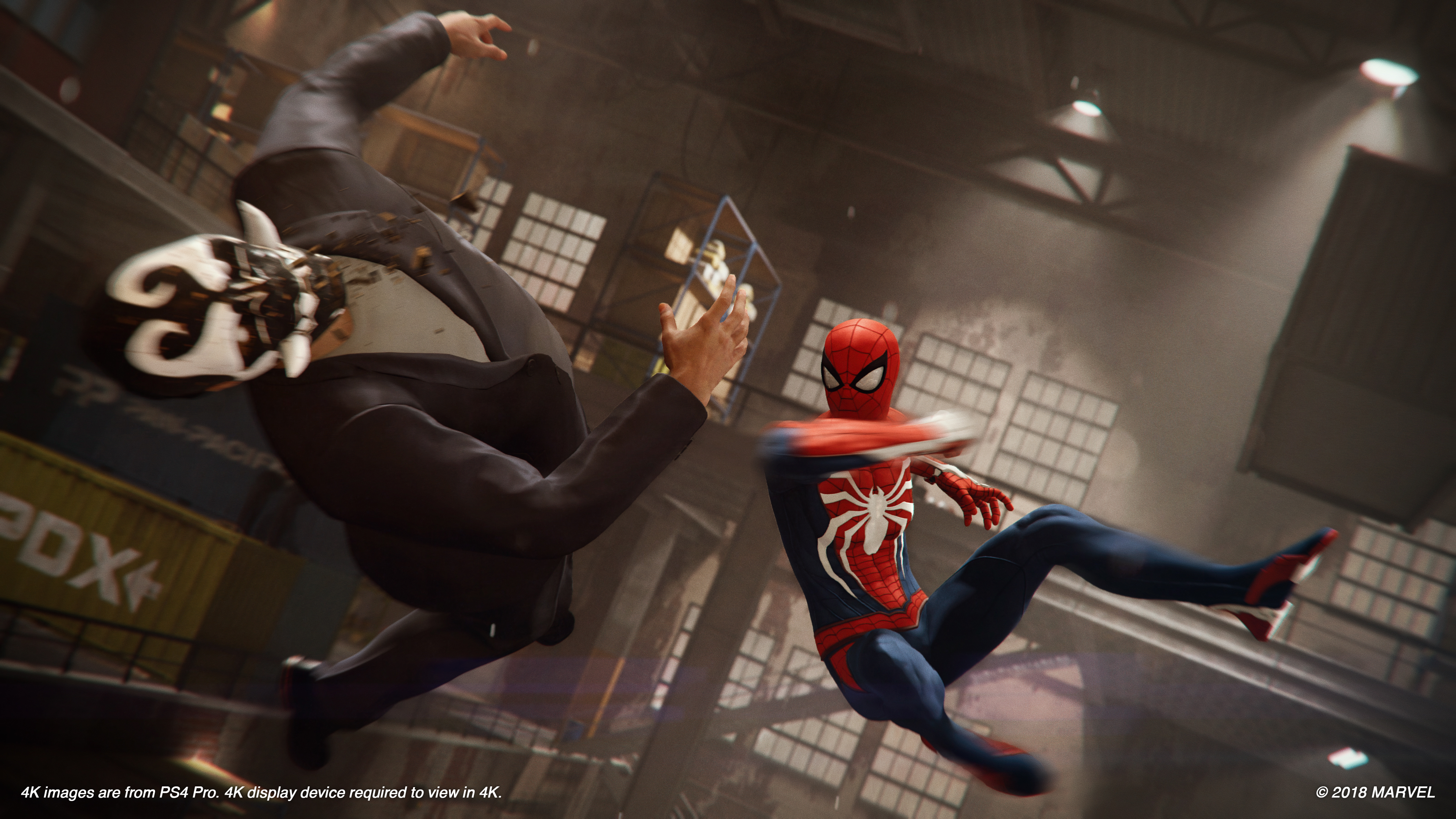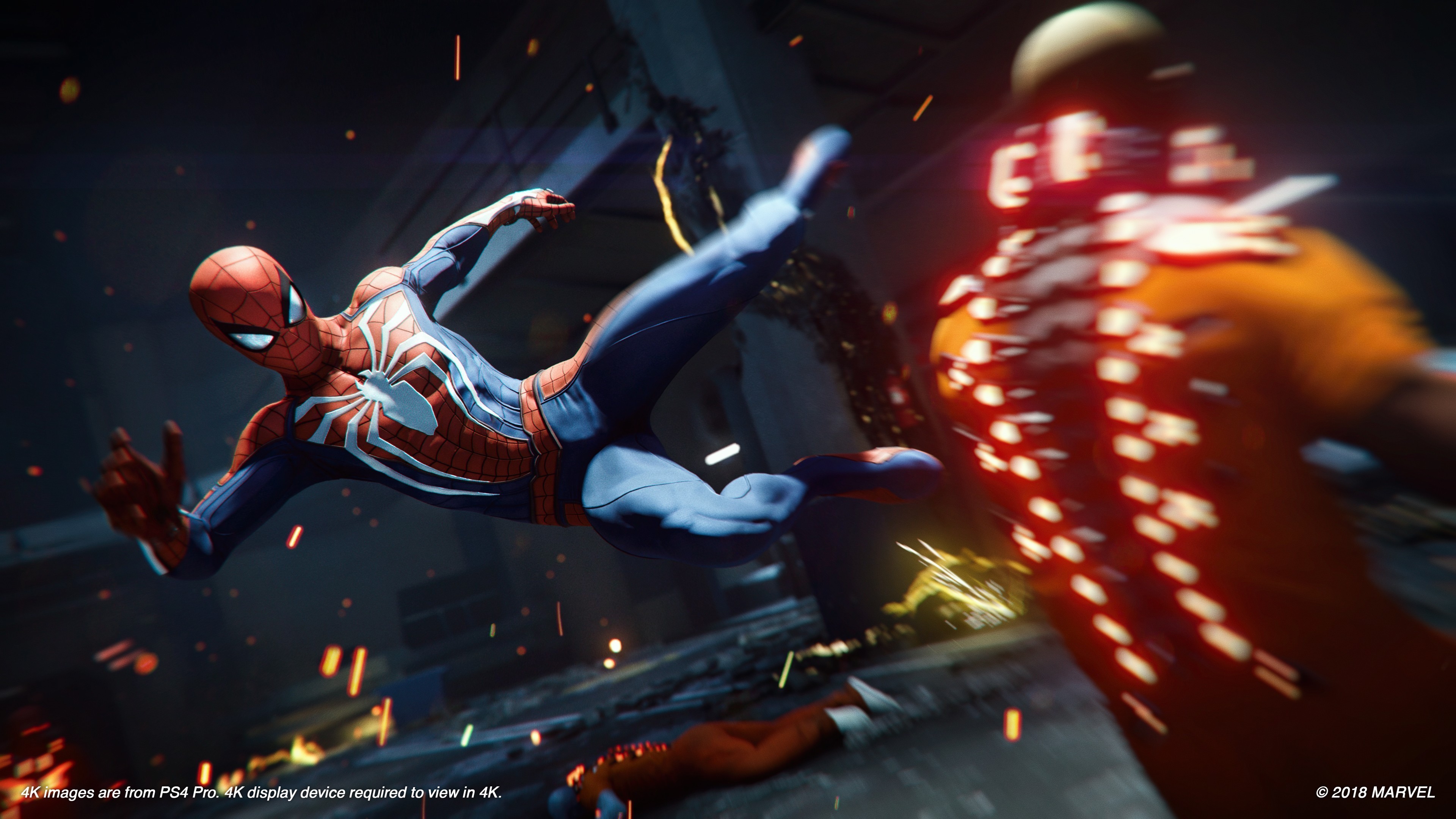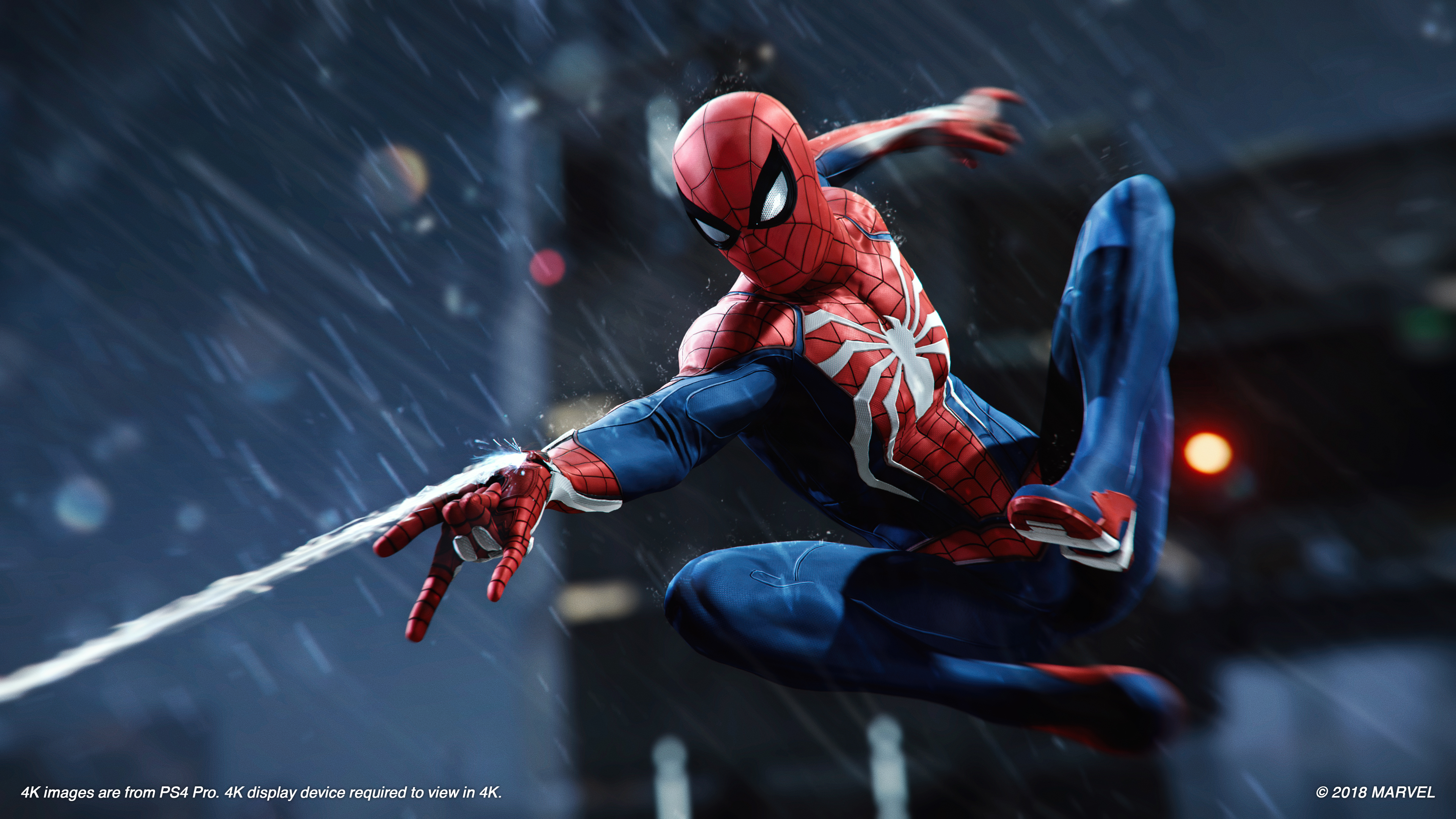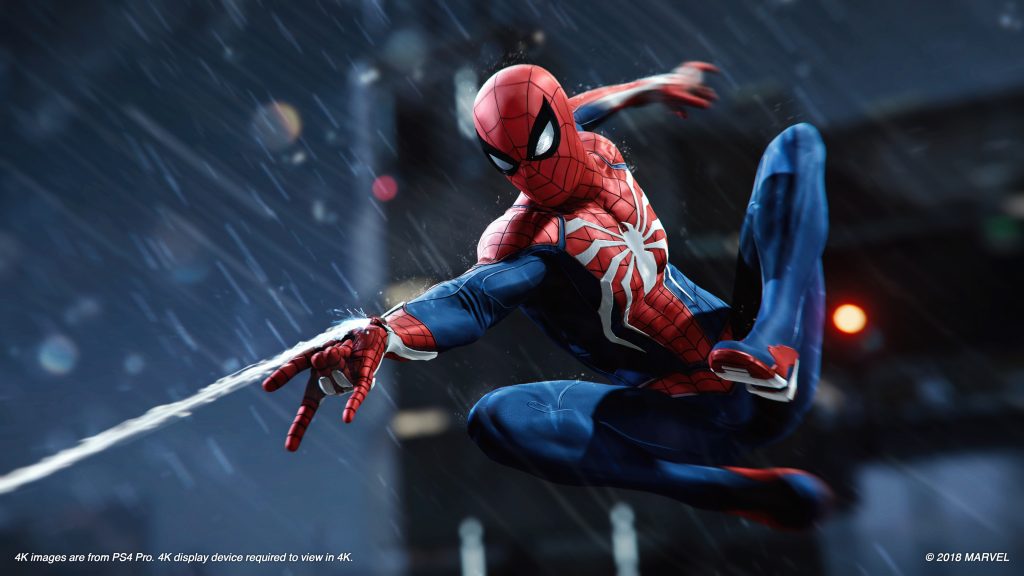Spider-Man, everyone’s favourite web-slinging superhero, has something of a chequered history when it comes to video games. The highs, like the PS2’s superlative sandbox movie tie-in Spider-Man 2, are colossal indeed; there’s no feeling quite like swinging through the streets of New York in the best Spider-Man games.
Unfortunately, the franchise also has its fair share of astounding lows to accompany these highs. Whether it’s the PS3’s Amazing Spider-Man tie-ins, which are mediocre at best, or the truly execrable Spider-Man: Friend or Foe, the webslinger has certainly suffered enough in video game terms over the years.
With that in mind, when Sony announced that a PS4 exclusive Spider-Man game was in the works, the news was met with a mixture of trepidation and excitement. On the one hand, Insomniac Games was handling development, and if Ratchet and Clank and Resistance were any indicators of quality, the game would be a delight.
On the other hand, Spider-Man as a video game franchise has just not been very good for a couple of years now, so reviving the ailing fortunes of this should-be giant of gaming is no easy task. It’s to the game’s credit, then, that Insomniac Games manages to do just that; Spider-Man is the best game to feature the titular webslinger in many, many years, and it just might be one of the PS4’s best so far.

Spider-Man takes place in – you guessed it – New York, and focuses on a 23-year-old Peter Parker who’s come to terms with his role as Spidey. The plot itself is no great shakes; if you’ve read a comic book or seen one of the more recent Marvel cinematic outings, then you know what to expect here. It is worth saying that Spider-Man isn’t based on any existing Spider-Man storyline, so you don’t need a PhD in Marvel to understand what’s going on, which is always nice. Put simply, some stuff goes wrong and the world is in danger, so it falls to Spider-Man to put things right.
The specifics are obviously a little more intricate than that, but the plot isn’t a revelation in itself. There are some surprising moments here and there, but they don’t do much to make up for a fairly standard archetypal “something is threatening New York” Spidey narrative. That said, nobody’s really here for the story anyway; our “crippling psychological drama” quotient is already more than filled thanks to Batman and his harrowing Arkham antics.
No, what we want from Spider-Man is what we’ve been craving since the series’ (arguable) apex, Spider-Man 2. We want to feel like Spider-Man. We want to soar between skyscrapers, our webs latching effortlessly onto the concrete as we propel ourselves forward, feeling the momentum as the air rushes past our mask. Despite its relative atavism when it comes to actual gameplay mechanics, Spider-Man 2 was the only game to really achieve that feeling, to put us in the spandex shoes of the titular arachnoid.

Or at least it was. It’s an absolute pleasure to report that Spider-Man feels really, really good to play. For the first time in 14 years, swinging through New York is satisfying, with a real sense of speed and weight to Spider-Man’s webs. Insomniac has allowed the intricacies of control to be a bit trickier than other recent Spider-Man outings, trusting the player to figure out how to manoeuvre around the city themselves, and the game is all the better for it.
That’s not to say that web-slinging is all Spidey has in his arsenal. Elsewhere, Spider-Man is a very respectable sandbox, brimming with all the side missions and race challenges (well, sort of) that you’d expect from an open-world game with this much money and development heft behind it. Combat complements Spidey’s acrobatic style, with air combat an absolute must if you want to survive some of the (surprisingly tough) encounters. There’s also environmental combat, which sees Spider-Man using objects around him to augment his attacks; somehow, taking down enemies is all the more satisfying when one of New York’s most beloved superheroes brains them with a garbage can.
If we were to be extremely unkind (and we must try, in the interest of criticism), we would say that Spider-Man doesn’t really push the boat out or do anything new. There isn’t anything here that seasoned players won’t have seen in the Prototype, inFAMOUS or, well, Spider-Man franchises before. New York is breathtakingly beautiful, all shimmering lighting and details (Times Square in particular is an absolute marvel to behold, no pun intended), but we’ve come to expect that from a developer known for its jaw-dropping eye candy.
In a sense, though, that’s a strength for Spider-Man as well as a weakness. While players seeking innovation will be disappointed, most of us have simply been clamouring for a good Spider-Man game, having been consistently let down by the franchise with each successive instalment since the series’ PS2 heyday. Spider-Man isn’t a series that necessarily needs to evolve and change; instead, we can be happy to simply play an iteration on the same game we loved in 2004, but with modern bells and whistles.

Not all of those modern bells and whistles are successful, though. The dreaded quick-time events show up from time to time, and they’re as unwelcome as ever, while the stealth mechanics don’t really feel necessary when the combat is so acrobatic and cathartic. These are nitpicks, though, and they don’t take away from the core experience, especially as it’s entirely possible to simply while away hours zipping through New York at your own pace.
In the end, this is the best thing about Spider-Man; its traversal mechanics are so fun and well-implemented that just spending time in the game’s world is a joy in and of itself. The framework which surrounds that traversal may be a little dated, but we’d take Spider-Man over any other sandbox simply for its web-slinging. Don’t get us wrong; there’s still a great, full-blooded open world experience here for the taking, but the movement mechanics are the star of the show. Excelsior!
This post didnt have a specific author and was published by PS4 Home.


